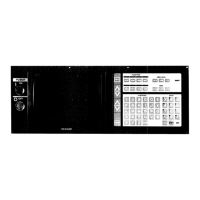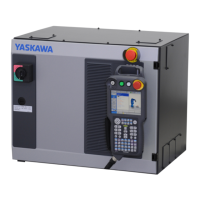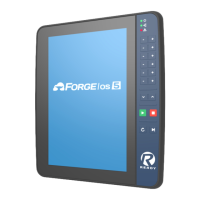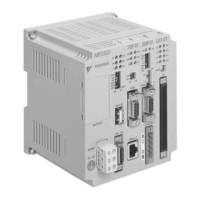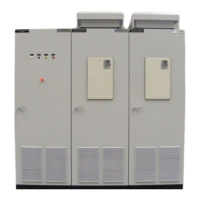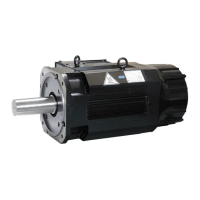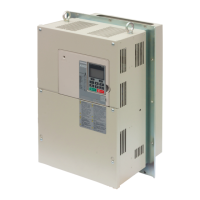20.2.47 EXTERNAL INPUT, VERIFY AND OUTPUT
SIGNALS (EIN, EVER, EOUT, ECLM, IER, EDTS)
(2) External Verify (EVER) Input and Input Error (IER) Output
If the EVER input is closed in label-skip state in the EDIT
mode, the function automatically changes over to PROG. And
it will start to verify the external part program data and the part
program data in the part program memory through the input
device (or interface) specified by parameter #6003. Verification
is performed on program with the specified O number.
When verifying a series of multiple part programs, execution
does not stop at the end of each programs (M02 or M30). In this
case, these data are continuously verified from the beginning EOR
code (ER or 910)to the ending EOR code.
If mismatch is found, the input error (IER) output signal is
closed. This signal may be cleared and return to open by turning on
the external reset (ERS) inputs.
(3) External Output (EOUT) Input
If the EOUT input is closed in label-skip state in the EDIT
mode, the function automatically changes over to PROG. And
it will output all part program data stored in the part program
memory through the output interface specified by parameter
#6003. However, specific part program specified by O number
cannot be output.
(4) External Memory Clear (ECLM) Input
If the ECLM input is closed in label-skip state in the EDIT
mode, the function automatically changes over to PROG. And
it erases all part programs stored in the part program memory.
However, specific part program specified by O number cannot
be erased.
(5) Edit Condition (EDTS) Output
If input, verification, output and memory clear are being
executed by turning EIN, EVER, EOUT and ECLM inputs on,
this EDTS output signal closed. When execution is completed,
this signal is opened again.
(6) Usage Example and The Time Chart
The following procedure is operating sequence during input
(storage), verify and memory operation through an RS-232C
interface using a DC code.
(a) Close EDIT mode.
(b) Close external reset (ERS) input.
The program pointer returns to the beginning of the part
program currently selected, and label-skip function is effective.
(c) Close external memory clear (ECLM) input.
Function automatically changes over to PROG, and erase all
part programs. The EDTS output is closed during erase
condition and return to open when erasing is completed.
(d) Open EDTS signal to open external reset (ERS).
The label-skip function is effective.
(e) Close external input (EIN) signal. EDTS is closed.
(0
i. The control unit turns on request sending signal RS of the RS-
232C interface.
ii. If the NC unit becomes ready for sending, the combined
equipment returns capable-of-sending signal CS to the NC unit.
iii. The NC unit sends control code DC 1 through the sending
data SD line.
iv. The combined equipment sends part program data to the NC
unit through the receving data RD line with DC 1 as the trigger.
v. When the NC reads the EOR code (ER or
‘ZO), control code
DC3 is sent and at the same time request-sending signal RS is
turned off.
vi. The combined equipment reads DC3 and, together with
stopping sending of data, turns off capable-of sending signal
Cs.
When the above part program storage is completed, the editing
condition (EDTS) output is opened. If not in alarm state, the
external reset (ERS) signal is closed. The label-skip function is
effective.
(g) Close external verify (EVER) signal.
Verification between the part program data in NC and the
external data is performed with the same operation as in (c)i. to
vi, above. The EDTS output is closed during verify condition
and returns to open when verification is completed.
(h) Close memory operation (MEM) mode if not in alarm state.
(i) Close external reset (ERS) signal.
The program pointer returns to the beginning of the part
program which has been just verified. However, when batch
verification is executed on a number of part programs, the
program pointer returns to the beginning of the 1st part
program. (When desiring to use a part program other than
these, use “External Work No. Search” of the “External Data
Input” function.
(j) Close cycle start (ST) input.
Automatic operation of the selected part program is performed.
(k) Automatic operation ends if the necessary FIN signal processing
is executed to the M02 or M30 command of the last part
program,
Fig. 12.30 shows the time chart of the various signals related
above operation.
160

